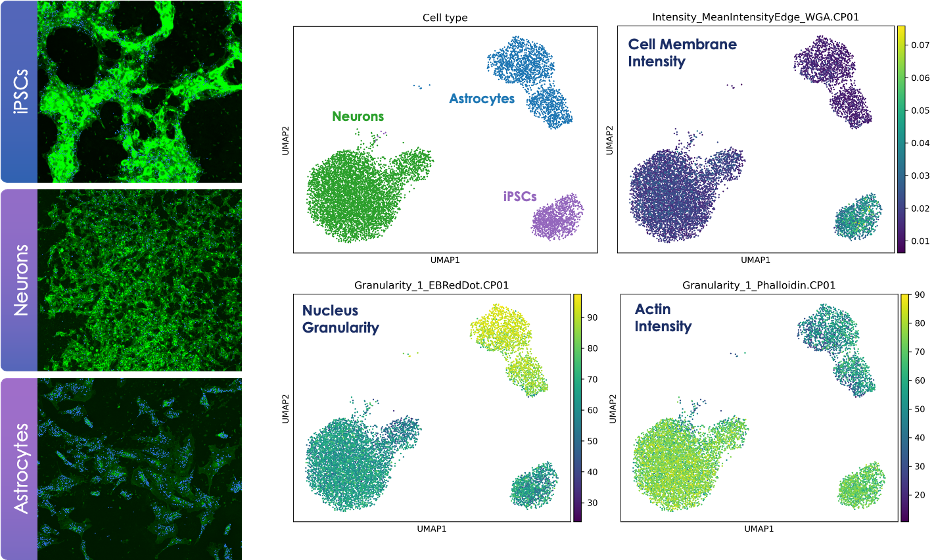The Future of Multiomic Research in Neuroscience: Exclusive Insights with Dr. Matt Tegtmeyer
Sign up for our newsletter
Join our scientific community to stay up to date with Element news, insights, and product updates.
This site is protected by reCAPTCHA and the Google Privacy Policy and Terms of Service apply.
In the rapidly evolving landscape of neuroscience research, the integration of high-dimensional phenotyping with multiomic technologies is transforming our ability to investigate neurodegenerative disease biology. In a conversation with Dr. Matt Tegtmeyer, assistant professor at Purdue University, we discussed his lab's pioneering work in cellular phenotyping and why they’re excited about their early studies with the AVITI24™ platform.
From cell painting to multiomic integration
Dr. Tegtmeyer’s lab specializes in using high-dimensional phenotyping, or phenomics, to understand the mechanisms underlying genetic variants associated with neuropsychiatric and neurodegenerative disorders. His team uses cell painting, a morphological profiling technique, to analyze cellular structures across different cell types and differentiation states.
"We use a mixture of six different stains that measure eight different constituent organelles, including the nucleus, endoplasmic reticulum, mitochondria, actin, Golgi, plasma membrane, and cytoplasmic RNA. Using machine learning, we extract thousands of morphological characteristics from a single cell," Dr. Tegtmeyer explained. He likened this approach to genome-wide expression profiling to get an unbiased global survey of cellular morphology, and emphasized its affordability compared other single cell technologies.
However, one of the major challenges with cell painting is that interpretation of these features requires additional experiments to determine the molecular underpinnings. "Whereas in this case," he noted, referring to the AVITI24 platform, "we could capture RNA, protein, and morphology simultaneously so we can have a comprehensive view of what molecular changes are occurring, and how those might give rise to the morphological changes."
Pilot testing the AVITI24 platform
Dr. Tegtmeyer’s lab piloted the AVITI24 platform and our Teton™ neuroscience panel, which allows simultaneous assessment of 350 transcripts, 50 proteins (including phospho-proteins), and 6 cellular morphology features. For these experiments, the team differentiated induced pluripotent stem cells (iPSCs) into astrocytes and excitatory neurons, using a neurogenome overexpression approach, and had their cells analyzed on the AVITI24 as part of our TAP program.
"One of the things I was very interested in was comparing cell painting on the AVITI24 to our standard cell painting methods," Dr. Tegtmeyer shared. "In our recent neural cell painting publication, we achieved 95% accuracy in predicting cell type based on morphology. But with AVITI24, we saw an increase to 99% accuracy using the same logistic regression model. We get better accuracy with the added information of RNA expression.”

Linking morphology to disease biology
Beyond cellular classification, the technology is providing valuable insights into disease biology. One of the key findings from their pilot experiments involved the gene CAPN2, which encodes calpain-2, an enzyme linked to Alzheimer’s disease.
"We observed significantly higher CAPN2 expression in astrocytes compared to neurons and iPSCs," Dr. Tegtmeyer revealed. "Since CAPN2 is implicated in the cleavage of GSK3-beta, which exacerbates Tau pathology and neuroinflammation, we’re now investigating how Alzheimer’s-associated variants and environmental toxins impact this relationship. In one single run of an experiment, I can assess the relationship, and I don’t have to rely on puzzling together several rounds and iterations of validations."
Scaling up multiomic research
Dr. Tegtmeyer emphasized the scalability and efficiency of the AVITI24 platform, particularly for high-throughput experiments. "Profiling millions of cells is incredibly expensive and time-consuming with current single cell approaches. But with Teton chemistry, doing a million cells in a run is feasible, and we get data back overnight instead of waiting weeks or months."
This accelerated timeline has profound implications for the field. "Rather than spending months analyzing an experiment and deciding whether the information is useful, we can know in a week and move forward quickly," he added, “By using a system with high dimensional readouts, we can get a better sense of what is causing disease, rather than what is caused by disease.”
Looking to the future
One of the most exciting prospects on the horizon is the potential application of AVITI24 in neuro drug discovery. As his lab continues to push the boundaries of what’s possible with multiomics, Dr. Tegtmeyer is excited about the future.
With the rapid advancements in multiomic technologies, Dr. Tegtmeyer’s work underscores the transformative potential of integrated morphological and molecular profiling. As tools like AVITI24 continue to advance, they promise to accelerate the pace of discovery in neuroscience and beyond.